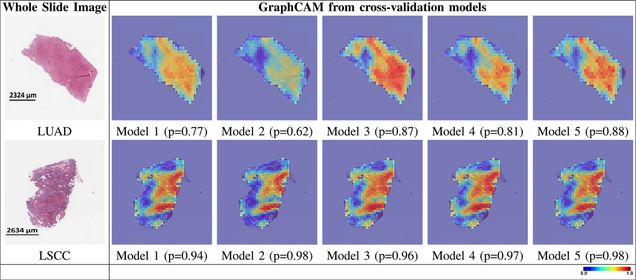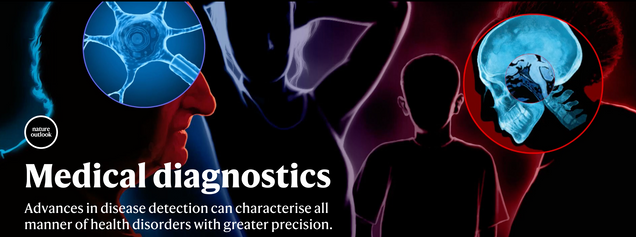Selected Projects and Publications
AIR faculty are pushing the boundaries of AI research to advance new knowledge and solve important societal problems spanning healthcare, emerging media, and more. Learn about research happening at AIR in the selected projects below.
AI in Healthcare
A BU-led research team shows how Generative AI can be used to diagnose different forms of dementia
Study Overview: AIR Researchers Vijaya B. Kolachalama (Chobanian & Avedisian SOM) and Bryan A. Plummer (CS) developed a generative AI (GenAI) method for diagnosing ten different types of dementia, including vascular dementia, Lewy body dementia, and frontotemporal dementia in collaboration with BU faculty and graduate student researchers from the departments of computer science, electrical & computer engineering, medicine, radiology, neurology, and faculty of computing and data sciences, and collaborators.
Publication: Chonghua Xue, Sahana S. Kowshik, Diala Lteif, Shreyas Puducheri, Varuna H. Jasodanand, Olivia T. Zhou, Anika S. Walia, Osman B. Guney, J. Diana Zhang, Serena Poésy, Artem Kaliaev, V. Carlota Andreu-Arasa, Brigid C. Dwyer,Chad W. Farris, Honglin Hao,Sachin Kedar, Asim Z. Mian, Daniel L. Murman, Sarah A. O’Shea, Aaron B. Paul, Saurabh Rohatgi, Marie-Helene Saint-Hilaire, Emmett A. Sartor, Bindu N. Setty, Juan E. Small, Arun Swaminathan, Olga Taraschenko, Jing Yuan, Yan Zhou, Shuhan Zhu, Cody Karjadi, Ting Fang Alvin Ang, Sarah A. Bargal, Bryan A. Plummer, Kathleen L. Poston, Meysam Ahangaran, Rhoda Au & Vijaya B. Kolachalama. “AI-based differential diagnosis of dementia etiologies on multimodal data”. Nat Med 30, 2977–2989 (2024). https://doi.org/10.1038/s41591-024-03118-z.

Project: Developing AI models that predict a patient’s responsiveness to aphasia rehabilitation
AIR Researchers Margrit Betke (CS), Prakash Ishwar (ECE), and Janusz Konrad (ECE) collaborated with Swathi Kiran (SAR) and Archana Venkataraman (ECE) to develop AI models that predict a patient’s responsiveness to aphasia rehabilitation using a complex set of brain and behavioral markers. Their work resulted in several publications, including a presentation at the international workshop on Computer Vision for Automated Medical Diagnosis.
- Billot A, Lai S, Varkanitsa M, Braun EJ, Rapp B, Parrish TB, Higgins J, Kurani AS, Caplan D, Thompson CK, Ishwar P, Betke M, Kiran S. “Multimodal Neural and Behavioral Data Predict Response to Rehabilitation in Chronic Poststroke Aphasia.” Stroke. 2022 May;53(5):1606-1614. doi: 10.1161/STROKEAHA.121.036749. Epub 2022 Jan 26. PMID: 35078348; PMCID: PMC9022691.
- Zijian Chen, Maria Varkanitsa, Prakash Ishwar, Janusz Konrad, Margrit Betke, Swathi Kiran & Archana Venkataraman (2025). “A Lesion-Aware Edge-Based Graph Neural Network for Predicting Language Ability in Patients with Post-stroke Aphasia”. In: Bathula, D.R., et al. Machine Learning in Clinical Neuroimaging. MLCN 2024. Lecture Notes in Computer Science, vol 15266. Springer, Cham. https://doi.org/10.1007/978-3-031-78761-4_9
- Gu, Y., Bahrani, M., Billot, A., Lai, S., Braun, E. J., Varkanitsa, M., . . . Betke, M. (2020, June 30-July 3, 2020). “A Machine Learning Approach for Predicting Post-stroke Aphasia Recovery: A Pilot Study.”Association for Computing Machinery (ACM) Conference on PErvasive Technologies Related to Assistive Environments (PETRA ’20).

AI Solutions in Digital Pathology
Study Overview: A collaboration between Margrit Betke (CS) and Vijaya Kolachalama (Chobanian & Avedisian SOM) yielded several publications for AI solutions in digital pathology.
Publications:
- Zheng Y, Gindra RH, Green EJ, Burks EJ, Betke M, Beane JE, Kolachalama VB. “A Graph-Transformer for Whole Slide Image Classification.” IEEE Trans Med Imaging. 2022 Nov;41(11):3003-3015. doi: 10.1109/TMI.2022.3176598. Epub 2022 Oct 27. PMID: 35594209; PMCID: PMC9670036.
-
Zheng Y, Conrad RD, Green EJ, Burks EJ, Betke M, Beane JE, Kolachalama VB. “Graph Attention-Based Fusion of Pathology Images and Gene Expression for Prediction of Cancer Survival.” IEEE Trans Med Imaging. 2024 Sep;43(9):3085-3097. doi: 10.1109/TMI.2024.3386108. Epub 2024 Sep 4. PMID: 38587959; PMCID: PMC11374469.

Can an AI Model Learn the Changing Appearance of an Ear as a Baby Grows?
Study Overview: AIR Co-Director Margit Betke (CS) collaborated with faculty and graduate student researchers from BU’s departments of computer science and global health, and the University of Zambia, to develop a method for identifying young children in Zambia using AI-assisted biometric authentication. This work won a best poster award at the IEEE International Joint Conference of Biometrics.
Publication: Lauren Etter, Margrit Betke, Ingrid Y. Camelo, Christopher J. Gill, Rachel Pieciak, Russell Thompson, Libertario Demi, Umair Khan, Alyse Wheelock, Janet Katanga, Bindu N. Setty, and Ilse Castro-Aragon. “Curated and Annotated Dataset of Lung US Images in Zambian Children with Clinical Pneumonia.” Radiology: Artificial Intelligence 2024 6:2. https://doi.org/10.1148/ryai.230147

BU-led interdisciplinary research team is developing the first anatomy-aware GenAI model for lung abnormalities
Study Overview: AIR researcher Kayhan Batmanghelich (ECE), with Boston University ECE PhD students and collaborators, published a paper that introduces a unique approach to AI-powered medical imaging: the first anatomy-aware generative AI (GenAI) model shown to efficiently produce highly accurate volumetric (3D) chest CAT scan images using text prompts.
Publication: Xu Y, Sun L, Peng W, Jia S, Morrison K, Perer A, Zandifar A, Visweswaran S, Eslami M, Batmanghelich K. “MedSyn: Text-Guided Anatomy-Aware Synthesis of High-Fidelity 3-D CT Images”. IEEE Trans Med Imaging. 2024 Oct;43(10):3648-3660. doi: 10.1109/TMI.2024.3415032. Epub 2024 Oct 28. PMID: 38900619; PMCID: PMC11656526.
AI and Emerging Media

Artificial Intelligence Reveals Youth-Targeting Strategies of Tobacco Companies
Study Overview: AIR researchers Bryan Plummer (CS) and Derry Wijaya (CS) collaborated with Traci Hong (COM), BU faculty from School of Public Health and others to develop a computer vision algorithm, paired with quantitative analyses, to analyze over 2,000 Instagram posts from 25 different synthetic nicotine brands. Their analysis showed that the vast majority (87%) did not adhere to FDA health warning requirements for tobacco advertising and found an association between the presence of a health warning and user engagement on Instagram.
Publication: Jiaxi Wu, PhD; Briana M. Trifiro, MA; Lynsie R. Ranker, PhD; Juan Manuel Origgi, MS; Emelia J. Benjamin, MD, ScM; Rose Marie Robertson, MD; Aruni Bhatnagar, PhD; Andrew C. Stokes, PhD; Ziming Xuan, ScD; Derry Wijaya, PhD; Bryan Plummer, PhD; Jennifer Cornacchione Ross, PhD; Jessica L. Fetterman, PhD; Traci Hong, PhD. “Health Warnings on Instagram Advertisements for Synthetic Nicotine E-Cigarettes and Engagement.” JAMA Netw Open. 2024;7(9):e2434434. doi:10.1001 jamanetworkopen.2024.34434.

Agenda Setting, Cross-cutting Effects, and Political Expression on Social Media: The Gun Violence Case
Project Overview: A study by AIR researchers and CS faculty Derry Wijaya and Margrit Betke with collaborators focuses on a polarized issue—U.S. gun violence—examining agenda setting as an antecedent of political expression on social media. A state-of-the-art machine-learning model was used to analyze news coverage from 25 media outlets—mainstream and partisan. Paired with a two-wave panel survey conducted during the 2018 U.S. midterm election, the study showed that mainstream media shape public opinion about gun violence, which then stimulates expression about the issue on social media. and that partisan media’s gun violence coverage has significant cross-cutting effects.
Publication: Guo, L., Zhang, Y., Mays, K., Akyürek, A. F., Wijaya, D., & Betke, M. (2024). “Agenda Setting, Cross-cutting Effects, and Political Expression on Social Media: The Gun Violence Case.” Communication Research, 51(8), 1033-1057. https://doi.org/10.1177/00936502231151555
